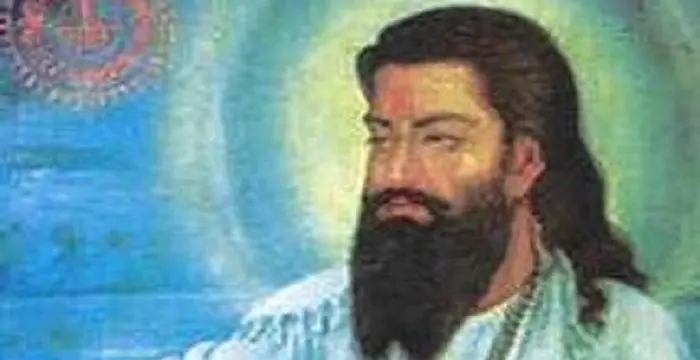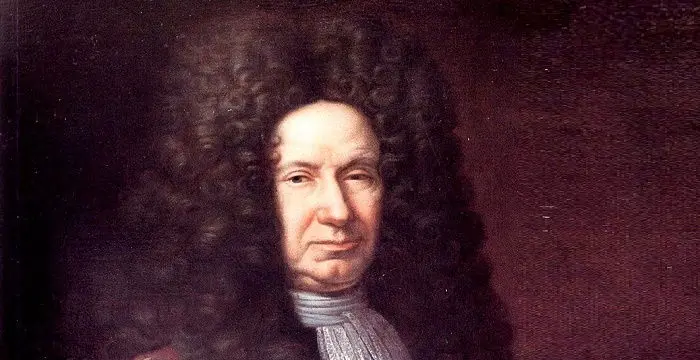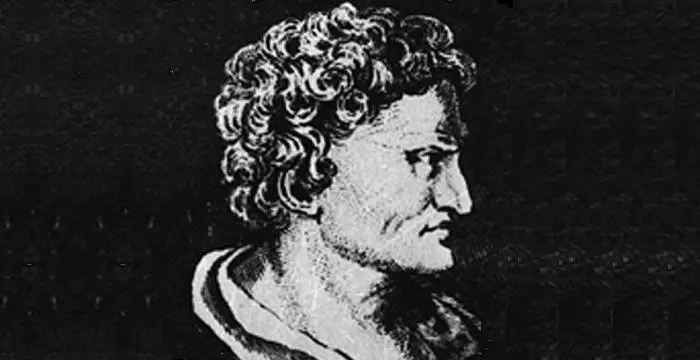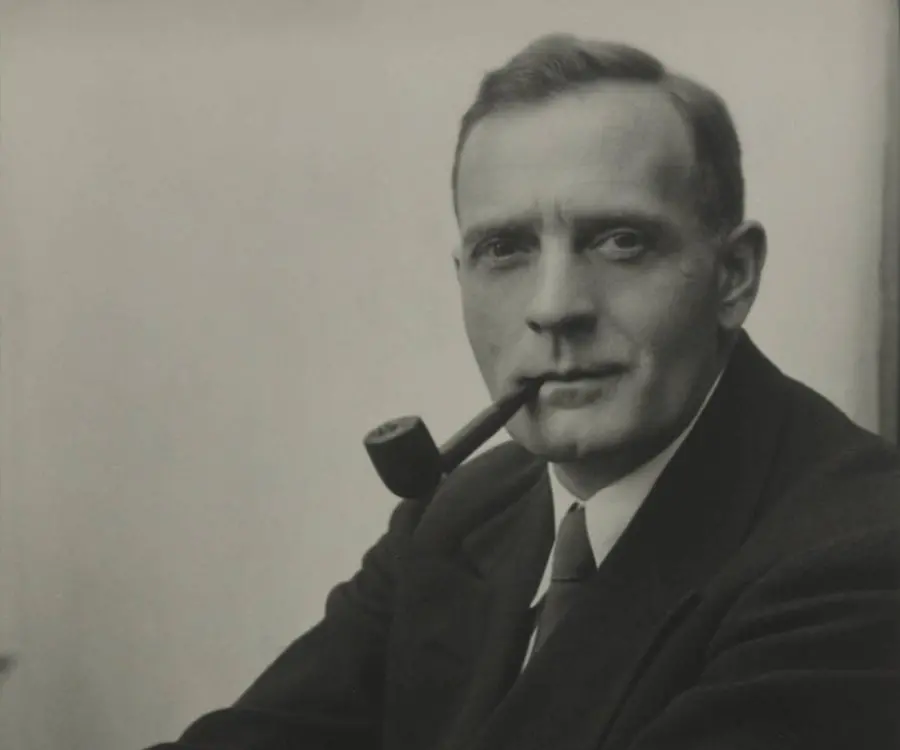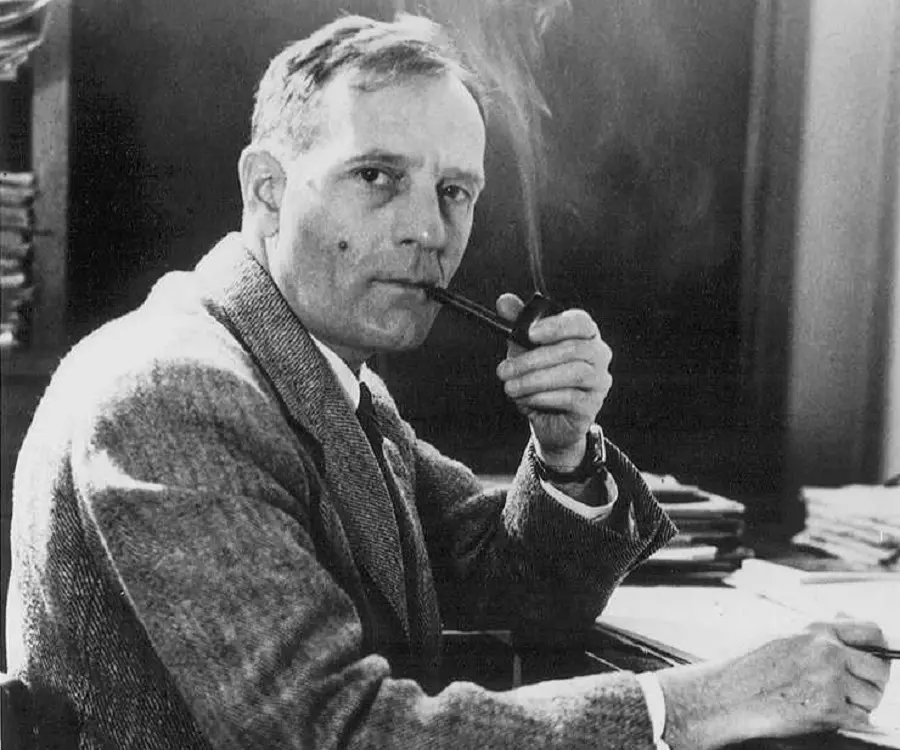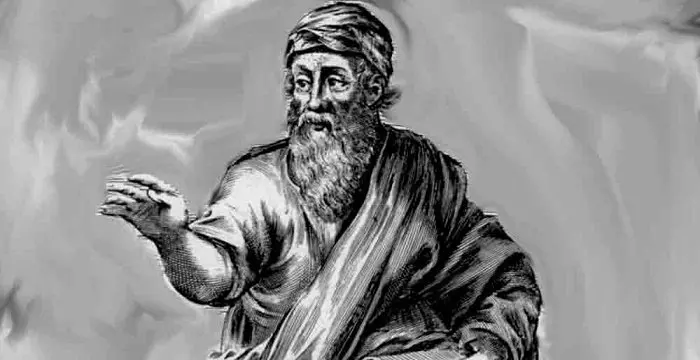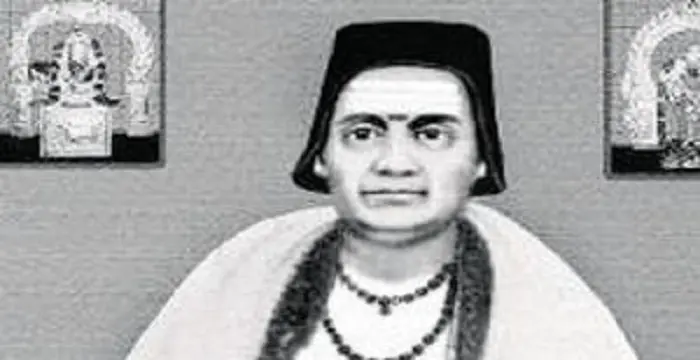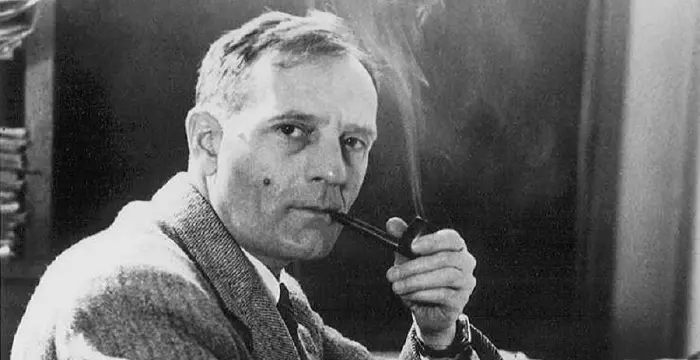
Edwin Powell Hubble - Astronomers, Career and Childhood
Edwin Powell Hubble's Personal Details
Edwin Powell Hubble was one of the world’s most famous astronomers of the 20th century
| Information | Detail |
|---|---|
| Birthday | November 20, 1889 |
| Died on | September 28, 1953 |
| Nationality | American |
| Famous | Scientists, Mathematicians, Astronomers, Astronomers, Mathematicians |
| City/State | Missouri |
| Birth Place | Marshfield, Missouri, USA |
| Gender | Male |
| Sun Sign | Scorpio |
| Born in | Marshfield, Missouri, USA |
| Famous as | Astronomer & Mathematician |
| Died at Age | 63 |
// Famous Astronomers
Brahmagupta
Brahmagupta was a highly accomplished ancient Indian astronomer and mathematician. This biography of Brahmagupta provides detailed information about his childhood, life, achievements, works & timeline.
Giovanni Domenico Cassini
Giovanni Cassini was a 17th century Italian mathematician, astronomer and astrologer. This biography of Giovanni Cassini provides detailed information about his childhood, life, achievements, works & timeline.
Hipparchus
Hipparchus was a Greek astronomer and mathematician. This biography profiles his childhood, life, achievements and timeline.
Edwin Powell Hubble's photo
Who is Edwin Powell Hubble?
Often cited as a ‘pioneer of the distant stars’, astronomer Edwin Hubble was one of the most important observational cosmologists of the 20th century. His meticulous study and research led to the discovery of a universe beyond Milky Way galaxy. He was also instrumental in creating a classification system for galaxies, known as Hubble’s sequence, which has been used for several decades. Though educated in law, Hubble had an interest in astronomy since a child. However, adhering to his father’s request, he did not take up its study until the latter’s death. Hubble’s career in astronomy flourished exceptionally. He played a pivotal role in deciphering the vast and complex nature of the universe. Through observation andresearch, he proved the existence of galaxies other than our own Milky Way. He also conducted the revolutionary work of finding a constant relationship between galaxies' redshift and distance, which helped to eventually prove that the universe is expanding. Additionally, he created a classification system for galaxies that has been used by other researchers for decades: the Hubble sequence.He was also instrumental in making the Nobel Prize Committee include astronomy in the field of physics, thus helping future astronomers gain recognition for their work in the field of astrophysics. Sadly, had Hubble not died suddenly in 1953, hemight have become eligible for that year's Nobel Prize in Physics.
// Famous Mathematicians
Brahmagupta
Brahmagupta was a highly accomplished ancient Indian astronomer and mathematician. This biography of Brahmagupta provides detailed information about his childhood, life, achievements, works & timeline.
Giovanni Domenico Cassini
Giovanni Cassini was a 17th century Italian mathematician, astronomer and astrologer. This biography of Giovanni Cassini provides detailed information about his childhood, life, achievements, works & timeline.
Pythagoras
Pythagoras of Samos was a Greek mathematician and philosopher. Read on to learn more about Pythagoras’s profile, childhood, life and timeline.
Childhood &Early Life
Edwin Hubble was born on November 20, 1889 in Marshfield, Missouri, to Virginia Lee Hubble and John Powell Hubble. His father was an insurance executive who moved with his family to Wheaton, Illinois, when young Edwin was 11 years of age.
As a young boy, Hubble showed his prowess in athletics. He excelled at all forms of sports, be it baseball, football, basketball or even track and field. He also won several medals and trophies for his athletic brilliance on field and court. Academically, he was an above average student.
Completing his high school studies, he enrolled at the University of Chicago to study law. He graduated with a Bachelor of Science in the subject in 1910. While at university, he was a member of the Kappa Sigma Fraternity.
After completing his graduation studies, Hubble spent three years at the Queen's College, Oxford, as one of the university's first Rhodes Scholars, initially studying jurisprudence and later adding literature and Spanish. He then earned his master’s degree. He also took a few courses in maths and science.
His father diedin 1913 and Hubble moved to Shelbyville where the rest of his family now lived, to care for his bereaved mother and siblings. The family yet again shifted to Louisville's Highlands’neighbourhood.
Career
Edwin Hubble had an interest in astronomyfrom an early age but he adhered to his father’s insistence to study law. However he felt a lack of motivation to practice law and instead took up a teaching post in Spanish, physics, and mathematics at the New Albany High School.
His stint as a teacher at New Albany lasted for only a year, as he gave up all to start afresh. He pursued further education to become a professional astronomer. With the help of a former professor, he entered graduate schoolstudying astronomy at the University of Chicago’s Yerkes Observatory. In 1917, he submitted his dissertation on‘Photographic Investigations of Faint Nebulae’, thus gaining his Ph.D.
With the US declaration of war on Germany in 1917,Hubble volunteered to serve in the United States Army. He was assigned to the newly created 86th Division, where he rose to the rank of lieutenant colonel. Post World War I, he spent a year in Cambridge, where he renewed his studies of Astronomy.
In 1919, Hubble accepted a staff position at the Carnegie Institution's Mount Wilson Observatory, near Pasadena, California. He retained this position until his death in 1953.
Edwin Hubble’s entry at Mount Wilson Observatory coincided with the completion of the world’s largest telescope, the Hooker Telescope. Using the newly constructed object, he set forth to make observations of the astronomic world.
Using the Hooker Telescope, Hubble became the first astronomer to prove that there were other galaxies that existed outside the Milky Way Galaxy. He took photographsand compared the varying degrees of luminosity among Cepheid variable stars. It was through his research that astronomers found out that the Andromeda Nebula was too far to be a part of the Milky Way galaxy and was in fact a galaxy on its own.
His claim of galaxies existing outside the Earth’s Milky Way Galaxy was thwarted by many astronomers who opposed his findings and research. However, confident of his research facts, Hubble went ahead and published his findings first in ‘The New York Times’and later in the form of a paper in the American Astronomical Society meeting.
His discovery of an expanding universe beyond the Milky Way galaxy opened new avenues in astronomical research. His theory helped to create a new line of research for future astronomers. Also, other than discovering galaxies, Hubble classified them according to their appearance in photographic images. This system of classification of galaxies ultimately became known as the Hubble sequence and was used by other researchers for several decades.
Hubble’s astronomical research did not end with the discovery of galaxies beyond Milky Way. Towards the mid-1920s, he partnered with Milton Humason and began conducting new researchon the galaxies' spectral shifts and unique distances. He examined the relation between distance and redshift of galaxies. From his research, Hubble found a rough proportionality of these objects' distances with their redshifts. Today it is famous as Hubble’s Law.
Together with Humason, Hubble published the research in 1929, theorizing that redshifts in galaxies' light emissionsmove at a linear rate to the distance between them. In simpler words, a galaxy's redshift is twice the size as another's when it's twice as far from another galaxy. The research was very well-received in the astronomical society.
Hubble and Humason's research work helped prove that galaxies came from a central point of origin. It was used by some scientists to support the Big Bang Theory, one of the most popular theories on the universe's origin, which was first suggested by Georges Lemaître in 1927.
Hubble spent the better part of the 1930s determining the distribution of galaxies and theirspatial curvature. The data indicated that the universe was flat and homogeneous, but there was a deviation from flatness at large redshifts. However, the evidence wasn’t fool-proof as it did not account for changes in luminosity of galaxies due to galaxy evolution.
In 1935, Edwin Hubble discovered asteroid 1373 Cincinnati. A year later, he published ‘The Realm of the Nebulae’, a historical and explanatory piece on his research in the field of extragalactic astronomy.He penned the book, ‘The Observational Approach to Cosmology’ in 1937.
With the onset of the World War II, he took up duty at the United StatesArmy at the Aberdeen Proving Ground. Post World War II, Hubble continued to conduct research at the Mount Wilson Observatory. He also worked at the Palomar Observatory in California.
Apart from his scientific contributions, Edwin Hubble spent a greater part of his later life convincing the Nobel Prize Committee about considering astronomy as a part of physics. He believed that the immense contributions made by astronomers in the field of astrophysics needed to be lauded. Sadly, it was only after Hubble’s death that the Committee recognized astronomy as a field of physics and decided to laud exceptional work done in this field.
Major Works
Edwin Hubble achieved major success when he started working at the Mount Wilson Observatory. There he conducted his revolutionary research that helped prove the existence of galaxies other than our Milky Way galaxy.
His work also led to finding a constant relationship between the galaxies' redshifts and distance, which eventually helped to prove that the universe is vast and ever expanding. Additionally, he devised a classification system for galaxies that has been used by other researchers for decades and is popularly known as the Hubble sequence. It was for this that Hubble is till date regarded amongst the world’s most famous astronomers.
Awards & Achievements
In 1924, Edwin Hubble was bestowed with the Newcomb Cleveland Prize.
He received the prestigious Bruce Medal in 1938 and was conferred with the Franklin Medal in physics in 1939.
His findings on nebulae earned him the American Association Prize and five hundred dollars from Burton E. Livingston of the Committee on Awards.
In 1946, post-World War II, Hubble became the proud recipient of the Legion of Merit for his outstanding contribution to ballistics research.
In 2003, he was included into the Hall of Famous Missourians for his outstanding contributions in the field of astronomical science.
Personal Life & Legacy
Edwin Hubble tied the nuptial knot with Grace Burke on February 26, 1924. The couple had no children.
Hubble suffered from a heart attack in July 1949 while on a vacation in Colorado. He recovered from the same. However, on September 28, 1953, a spontaneous blood clot in his brain led to cerebral thrombosis which cost him his life. He was 63 years old at the time.No funeral for him took place as his wife kept his burial site a secret.
To recognize and value the contributions he made to the field of astronomy, the United States Postal Service released a 41-cent stamp honoring Hubble on a sheet titled ‘American Scientists’ on March 6, 2008.
To mark Hubble’s legacy in the field of astronomy, Asteroid 2069 Hubble has been named after him. He also has a crater on the moon named after him.NASA named its orbiting space telescope after Edwin Hubble. Additionally, a planetarium, a highway, several schools and institutions and university facilities in United States bear his name.
His city of birth, Marshfield, Missouri, launched the Edwin P. Hubble Medal of Initiative to be awarded annually to astronomers of remarkable brilliance.
// Famous Scientists
Juliane Koepcke
Juliane Koepcke is a German-Peruvian biologist, who was the lone survivor among the 92 passengers and crew of the ill-fated LANSA Flight 508 that crashed in the Peruvian rainforest on 24 December 1971. Know more about her life in this biography.
Henry Cavendish
Henry Cavendish was a theoretical chemist and physicist, renowned for discovery of hydrogen and calculation of the mass of earth. To know more about his childhood, profile, timeline and career read on
Konstantin Tsiolkovsky
Konstantin Tsiolkovsky was a Russian rocket scientist and a pioneer of astronautics. This biography provides detailed information about his childhood, family, personal life, career, achievements, etc.
Edwin Powell Hubble biography timelines
- // 20th Nov 1889Edwin Hubble was born on November 20, 1889 in Marshfield, Missouri, to Virginia Lee Hubble and John Powell Hubble. His father was an insurance executive who moved with his family to Wheaton, Illinois, when young Edwin was 11 years of age.
- // 1910Completing his high school studies, he enrolled at the University of Chicago to study law. He graduated with a Bachelor of Science in the subject in 1910. While at university, he was a member of the Kappa Sigma Fraternity.
- // 1913His father diedin 1913 and Hubble moved to Shelbyville where the rest of his family now lived, to care for his bereaved mother and siblings. The family yet again shifted to Louisville's Highlands’neighbourhood.
- // 1917His stint as a teacher at New Albany lasted for only a year, as he gave up all to start afresh. He pursued further education to become a professional astronomer. With the help of a former professor, he entered graduate schoolstudying astronomy at the University of Chicago’s Yerkes Observatory. In 1917, he submitted his dissertation on‘Photographic Investigations of Faint Nebulae’, thus gaining his Ph.D.
- // 1917With the US declaration of war on Germany in 1917,Hubble volunteered to serve in the United States Army. He was assigned to the newly created 86th Division, where he rose to the rank of lieutenant colonel. Post World War I, he spent a year in Cambridge, where he renewed his studies of Astronomy.
- // 1919In 1919, Hubble accepted a staff position at the Carnegie Institution's Mount Wilson Observatory, near Pasadena, California. He retained this position until his death in 1953.
- // 1924In 1924, Edwin Hubble was bestowed with the Newcomb Cleveland Prize.
- // 1924Edwin Hubble tied the nuptial knot with Grace Burke on February 26, 1924. The couple had no children.
- // 1927Hubble and Humason's research work helped prove that galaxies came from a central point of origin. It was used by some scientists to support the Big Bang Theory, one of the most popular theories on the universe's origin, which was first suggested by Georges Lemaître in 1927.
- // 1929Together with Humason, Hubble published the research in 1929, theorizing that redshifts in galaxies' light emissionsmove at a linear rate to the distance between them. In simpler words, a galaxy's redshift is twice the size as another's when it's twice as far from another galaxy. The research was very well-received in the astronomical society.
- // 1935 To 1937In 1935, Edwin Hubble discovered asteroid 1373 Cincinnati. A year later, he published ‘The Realm of the Nebulae’, a historical and explanatory piece on his research in the field of extragalactic astronomy.He penned the book, ‘The Observational Approach to Cosmology’ in 1937.
- // 1939He received the prestigious Bruce Medal in 1938 and was conferred with the Franklin Medal in physics in 1939.
- // 1946In 1946, post-World War II, Hubble became the proud recipient of the Legion of Merit for his outstanding contribution to ballistics research.
- // Jul 1949 To 28th Sep 1953Hubble suffered from a heart attack in July 1949 while on a vacation in Colorado. He recovered from the same. However, on September 28, 1953, a spontaneous blood clot in his brain led to cerebral thrombosis which cost him his life. He was 63 years old at the time.No funeral for him took place as his wife kept his burial site a secret.
// Famous Mathematicians
Grigori Perelman
Grigori Perelman is a Russian mathematician who is best known for his contributions to Riemannian geometry and geometric topology. Check out this biography to know about his childhood, family life, achievements and fun facts about him.
Terence Tao
Terence Tao is an Australian- American mathematician who has contributed enormously to the field of mathematics. Check out this biography to know about his childhood, family life and achievements.
Isaac Newton
Isaac Newton was an English scientist and mathematician, who discovered gravitation and Newtonian Mechanics. Read this biography to find more on his life.
Brahmagupta
Brahmagupta was a highly accomplished ancient Indian astronomer and mathematician. This biography of Brahmagupta provides detailed information about his childhood, life, achievements, works & timeline.
Giovanni Domenico Cassini
Giovanni Cassini was a 17th century Italian mathematician, astronomer and astrologer. This biography of Giovanni Cassini provides detailed information about his childhood, life, achievements, works & timeline.
Bhāskara II
Bhaskara II was a 12th century Indian mathematician. This biography of Bhaskara II provides detailed information about his childhood, life, achievements, works & timeline.
Edwin Powell Hubble's FAQ
What is Edwin Powell Hubble birthday?
Edwin Powell Hubble was born at 1889-11-20
When was Edwin Powell Hubble died?
Edwin Powell Hubble was died at 1953-09-28
Which age was Edwin Powell Hubble died?
Edwin Powell Hubble was died at age 63
Where is Edwin Powell Hubble's birth place?
Edwin Powell Hubble was born in Marshfield, Missouri, USA
What is Edwin Powell Hubble nationalities?
Edwin Powell Hubble's nationalities is American
What is Edwin Powell Hubble's sun sign?
Edwin Powell Hubble is Scorpio
How famous is Edwin Powell Hubble?
Edwin Powell Hubble is famouse as Astronomer & Mathematician
